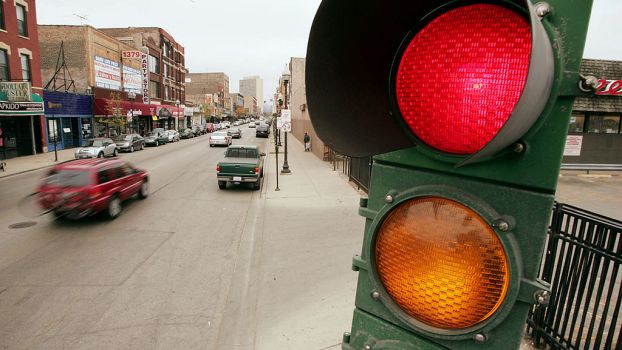
Hacker Creates Device That Can Turn Traffic Lights Green
Tired of waiting in a long line of cars for the light to turn green? Ever heard of the Flipper Zero? The technical jargon associated with this hacker’s best friend is enough to make most people’s head spin. The long and the short of it is the Flipper uses radio frequencies to interact with other electronics. A YouTube person named Peter Fairlie recently figured out a way to use the Flipper Zero to turn traffic lights from red to green.

Can you make a red light turn green?
Yes, sort of.
The Drive explains that the Flipper Zero has a sub-GHz radio that lets it send and receive radio data. This transmission or reception works on the same frequency as key fobs do for your car. However, most traffic control devices intended for emergency traffic redirection don’t use RF. Instead, they beam infrared light from vehicles to static receivers mounted on traffic light poles.
Police cars, fire trucks, and ambulances have Mobile Infrared Transmitters (MIRTs) devices. These gadgets send a specific pattern of infrared light to a receiver usually mounted around a traffic light. When the receiver picks up the MIRT’s signal, it initiates a traffic signal change.
How does a Flipper change a traffic light?
The RF won’t work in this scenario. Fairlie cleverly looked at the device’s General-Purpose Input/Output (GPIO) pins. In fact, the Flipper can generate electrical pulses that go to these pins. Then, the built-in frequency generator can figure out how quickly the pulses are sent. To skip a long, techy explanation, what happens next is that the YouTuber used the Flipper to manipulate an external set of infrared LEDs sourced from an old security camera by pulsing the infrared light at 14 Hz—or 14 cycles per second. Essentially, this flickering infrared light mimics the Opticom transmitter.
Is changing a traffic light legal?
Not only is using and even possessing one of these devices illegal, but it is also just a bad idea to use in the world. According to Cornell Law School, “Whoever, in or affecting interstate or foreign commerce, knowingly sells a traffic signal preemption transmitter to a nonqualifying user shall be fined under this title, or imprisoned not more than one year, or both. Whoever, in or affecting interstate or foreign commerce, being a nonqualifying user, makes unauthorized use of a traffic signal preemption transmitter shall be fined under this title or imprisoned not more than six months, or both.”
Fairlie disclaims that this video is meant to only be a “proof of concept” for entities allowed to use such a device but who might not be able to afford the proper gear. He explains, “I received feedback from a volunteer fire department that was looking for a low-cost solution to equip their personnel with. The 3M OptiCom units that GTT sells to city fire [departments] cost $5,000 each. Not all fire departments have that kind of money to spend on MIRT devices.”
It isn’t guaranteed to work
The do-it-yourself route works in concept, but in some cities with newer traffic preemption systems, it may not work in practice. Some new systems are encoded to keep a log of authorized vehicles. Some may even be able to log failed attempts and potentially be able to trace the attempt back to the unauthorized vehicle’s owner.





